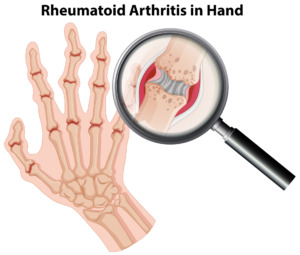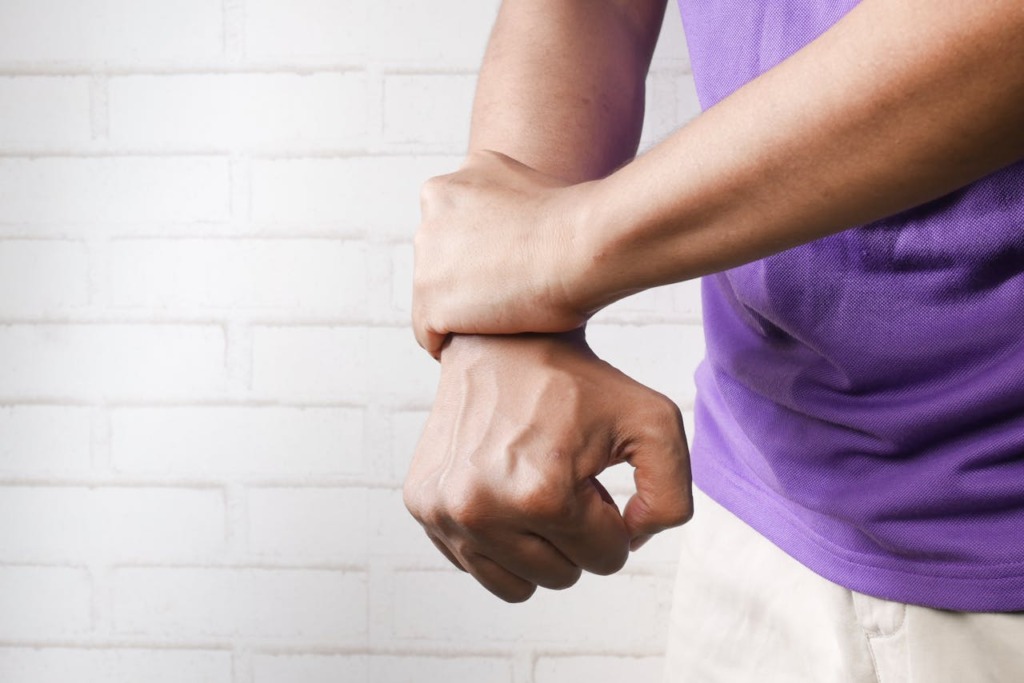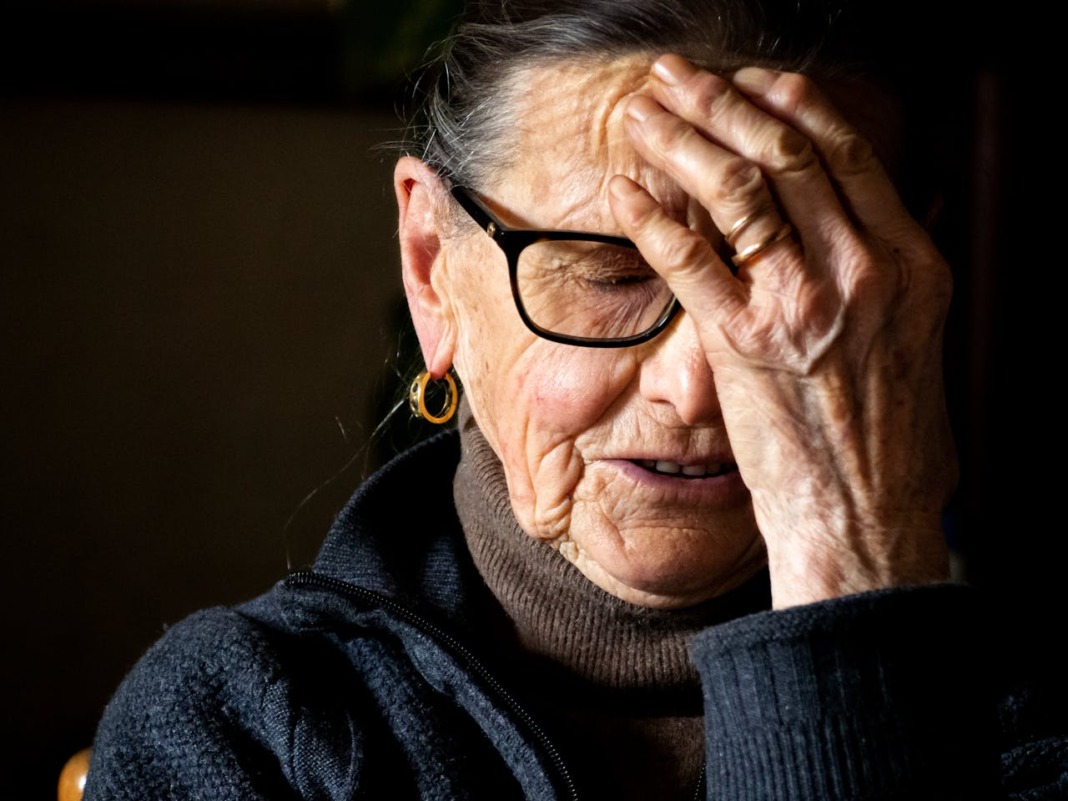Arthritis is a condition that affects the tissues in your joints. A joint is the junction of two bones. Both the cartilage, or smooth coating at the ends of bones and the lining of your joint may be attacked by arthritis. Your bones’ ends eventually become exposed, grind against one another, and wear away as the cartilage degrades. Because the hand has so many joints, arthritis frequently develops there. In this article, you are going to learn about how to get rid of arthritis in fingers.
The symptoms of arthritis in the fingers include pain, stiffness, and swelling due to inflammation of the finger joints. It can seriously impair hand function, which has an impact on day-to-day tasks and general well-being.
Given that millions of individuals worldwide suffer from finger arthritis, it is imperative to understand how to treat and manage the condition. In order to preserve hand function and lessen discomfort, effective treatment and prevention can improve general well-being.
Reducing discomfort, enhancing joint function, stopping additional damage, and preserving quality of life are the key objectives of treating finger arthritis with medications, therapies, and lifestyle changes.
Types Of Hand Arthritis
There different types of arthritis, but the most common of them that affects the fingers are:
1. Osteoarthritis
The most common type of arthritis is called osteoarthritis, which is brought on by the deterioration of joint cartilage. Osteoarthritis, also known as “wear and tear. It wears away and degrades the cartilage, which is the cushiony, smooth coating at the ends of your bones. Eventually, discomfort, stiffness, and loss of movement result from the ends of the bones rubbing against one another without any protection.
The joints in your wrist, thumb base, and middle and top (near fingernails) fingers are the most frequently affected by osteoarthritis. Bony lumps may develop in the joints of your fingers as a result of a chronic illness. It usually affects older persons and can result in severe discomfort as well as decreased finger movement.
2. Rheumatoid Arthritis

Rheumatoid arthritis is an autoimmune condition in which the immune system assaults the joints, resulting in inflammation, discomfort, and swelling. It can afflict people of any age and frequently results in abnormalities of the joints. Rheumatoid arthritis is a chronic condition characterized by persistent inflammation of the joint lining, resulting in pain, stiffness, and loss of function. It’s an autoimmune illness, meaning that the immune system in your body targets healthy tissue.
The synovium is the lining of a joint. The lubricant that your synovium creates makes it possible for cartilage to glide past one another with ease. The inflammation eventually erodes the bone itself by destroying the cartilage at the end of the bone. The tendons and ligaments that wrap the bones deteriorate and strain, causing the joints to lose their shape and alignment. Usually, rheumatoid arthritis affects the tiny joints in your hands, fingers, and wrists. The same joints on both sides of your body are typically affected. For example, arthritis is likely to affect the finger joints on both hands if it affects the finger joints on one.
3. Psoriatic Arthritis
Some persons who have the skin disorder (psoriasis) also develop psoriatic arthritis. It usually affects the fingers and other minor joints, causing swelling, discomfort, and inflammation in the joints.
Psoriatic arthritis is a type of arthritis that mostly affects the joints and skin (psoriasis). Your fingers start to swell. You’ll also have stiffness in the morning and joint pain. It resembles rheumatoid arthritis in many circumstances. It might just require a few fingers, though.
Symptoms And Signs Of Hand Arthritis

- Painful or burning joint pain that develops hours or days after you use your hands more frequently.
- Your hand(s) hurts and feels stiff in the morning.
- Swelling in the joint(s) of your hand.
- Pain may change from dull ache to sharp pain.
- Pain could keep you up at night.
- You might adjust how you use your hands if you are in pain.
- Your afflicted joint’s surrounding tissue may turn red and sensitive to touch.
- When you bend your fingers, you’ll experience a grating, grinding, cracking, or clicking sensation (crepitus).
- You cannot fully open and close your fingers.
- Heberden’s nodes, or little bone nodules, develop at the top joints of your fingers, while Bouchard’s nodes form on the middle joints of your fingers.
- Your fingers grow weak and less able to perform daily duties as a result of the enlargement, deformity, and abnormal bending of your finger joints.
Causes And Risk Factors Of Hand Arthritis
1. Genetics: The onset of arthritis is significantly influenced by genetic predisposition. The likelihood of having arthritis is higher in families with a history of the disease.
2. Age: As people age, their joints naturally deteriorate, which raises their risk of acquiring arthritis.
3. Injury: Arthritis in the affected joints might develop later in life if there has been prior joint injury.
4. Repetitive Strain: Overusing the fingers or performing repetitive motions can cause joint strain, which can aggravate arthritis.
5. Diet: An unhealthy diet that is high in processed foods and deficient in vital nutrients might raise the risk of arthritis and cause inflammation.
6. Obesity: Carrying too much weight strains joints and raises the risk of arthritis, especially in weight-bearing joints like the knees and hips, but it can even damage fingers.
7. Smoking: Smoking raises the chance of developing rheumatoid arthritis and exacerbates symptoms in those who already have it.
Diagnosis And Tests For Hand Arthritis

A thorough physical examination by a healthcare provider can help identify signs of arthritis, such as swelling, redness, and decreased range of motion. Your health provider can ask for the following:
1. Medical History: Understanding the patient’s past injuries and family history will help identify the type and diagnosis of arthritis.
2. X-rays: These diagnostic tools can identify arthritis-related joint deterioration, bone spurs, and cartilage loss.
3. MRI: MRI scans can identify early indications of arthritis and offer detailed images of soft tissues, such as ligaments and cartilage.
4. Rheumatoid Factor: Rheumatoid arthritis may be indicated by the existence of antibodies against rheumatoid factor.
5. Anti-CCP: Rheumatoid arthritis is highly specific to antibodies against the cyclic citrullinated peptide (anti-CCP).
6. Erythrocyte sedimentation rate (ESR) and C-reactive protein (CRP) elevations: These markers point to inflammatory processes within the body.
7. Joint Fluid Analysis: By examining the synovial fluid from the afflicted joint, it is possible to determine the exact kind of arthritis and exclude infections and other diseases.
How To Get Rid Of Arthritis In Fingers
Hand Arthritis – Medical Treatments
Your doctor may prescribe prescription and over-the-counter (OTC) drugs to treat your arthritis, depending on the kind of arthritis you have and how severe your symptoms are. Among these are a few of these:
OTC pain relievers: Usually used as the first line of treatment for minor arthritis pain, these include Advil (ibuprofen), Aleve (naproxen), Bayer (aspirin), and Tylenol (acetaminophen).
Corticosteroid injections: This drug is injected into the joint to help with swelling and pain management. Since there may be major side effects, most medical professionals advise against using this medication more frequently than a few times per year.
Disease-modifying antirheumatic drugs (DMARDs): These can help slow the progression of certain diseases Trexall (methotrexate), Arava (leflunomide), and Plaquenil (hydroxychloroquine) are a few examples.
Treatment with hyaluronic acid: The joints naturally contain a fluid called hyaluronic acid. Intraarticular hyaluronic acid injections may be beneficial for individuals with arthritis.
Physical therapy: Physical therapy helps enhance your range of motion, strength, and flexibility.
Surgery: When more conservative treatments are ineffective for treating severe forms of arthritis, surgery may be necessary. These operations include joint replacement, arthroscopy, and fusion.
Home Remedies For Hand Arthritis
- Hand exercises
- Hot and cold therapy
- Splinting
- Capsaicin creams
- Acupuncture
- Compression Gloves
- Vitamins
- Fish oil supplement
- Plant-based Diet
- Herbal Supplements
Preventive Measures

If someone already has arthritis, using the same precautions may help control their symptoms and reduce the condition’s progression.
Depending on the form of arthritis, the following actions may help avoid it:
- Remaining active
- Achieving or maintaining a moderate weight since obesity-related issues can raise the chance
- Refraining from smoking
- Consuming a diet high in antioxidants or anti-inflammatory foods that is primarily plant-based
- Limiting additional sweets and harmful fats, which can exacerbate inflammation and obesity
- Obtaining prompt medical attention if symptoms of conditions including skin changes and respiratory infections appear
- Preventing damage to the joints if feasible
Conclusion
Your hand arthritis may be easier to manage with a few natural, at-home treatments. As non-pharmaceutical pain management techniques, hand exercises, acupuncture, hot-cold treatment, splinting, meditation, and certain vitamins show promise. Consult a healthcare professional to learn which options might complement traditional medical care.



